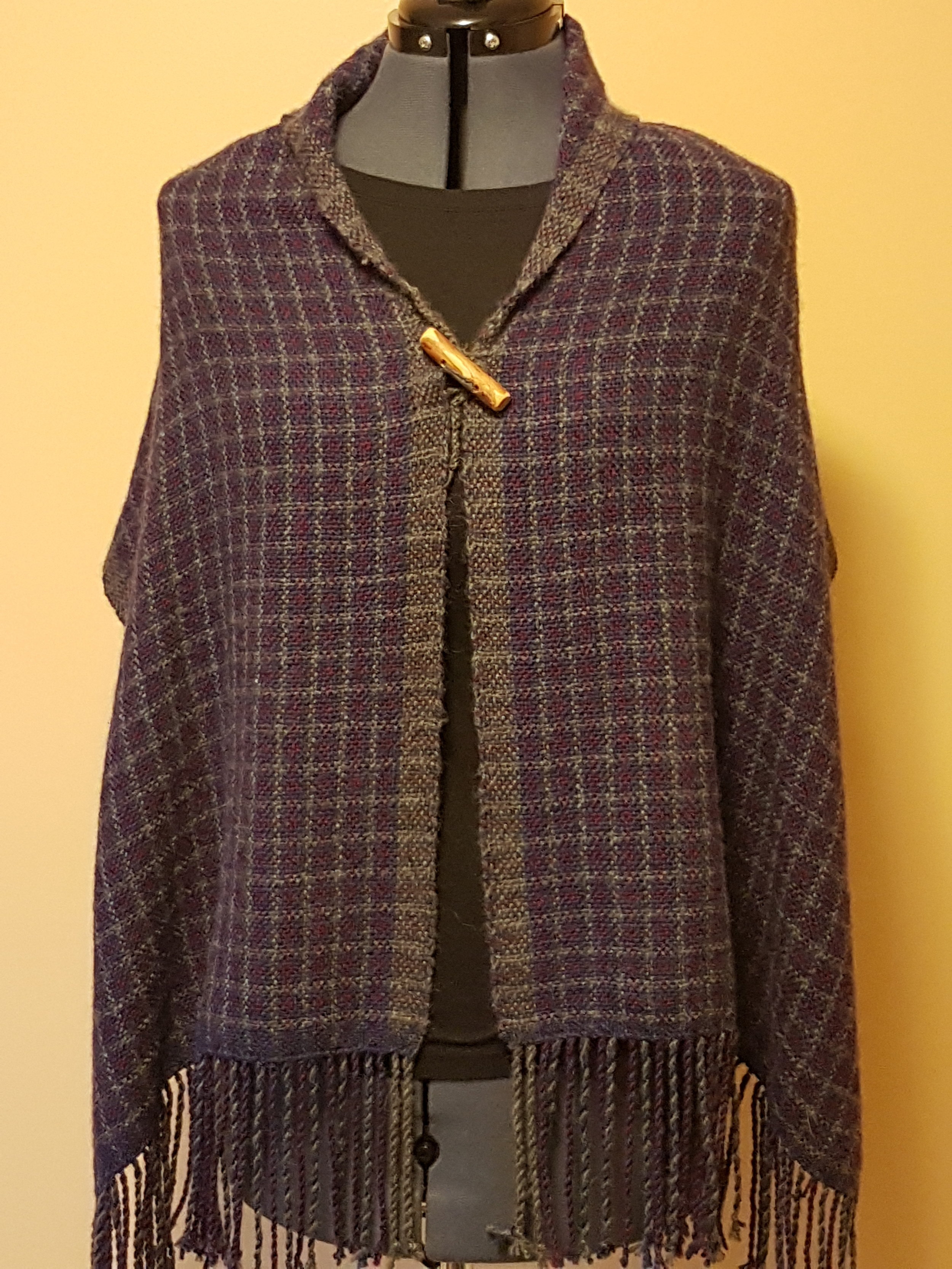The Magic of Finishing
I just finished a project this weekend. The whole time I was weaving I was feeling a little disappointed because it just wasn’t looking the way it ought. I was weaving a traditional hounds tooth pattern for the first time. But the hounds tooth wasn’t looking properly toothy. In my head I knew that once it came off the loom and was properly finished everything would be fine but my eyes were having troubles believing.
Still on the loom…not at all toothy!
I just finished a project this weekend. The whole time I was weaving I was feeling a little disappointed because it just wasn’t looking the way it ought. I was weaving a traditional hounds tooth pattern for the first time. But the hounds tooth wasn’t looking properly toothy. In my head I knew that once it came off the loom and was properly finished everything would be fine but my eyes were having troubles believing.
When a weaver uses the term “finishing” it doesn’t necessarily mean that the project is complete. Finishing (also called fulling) refers to the process of washing/soaking and drying the fabric to allow the fibres to plump up (full) and pull together (this isn’t technically accurate, but a very simple explanation of what it looks like happens). It gives the fabric stability and structural integrity. And it’s a little bit magical. Suddenly a loose weave that your fingers can easily poke through become fabric. A pattern that couldn’t be seen on the loom appears. And reed lines disappear
When I look at my weaving on the loom I can usually see right through the fabric. If the fibres are pressed too tightly in the weaving process then during the finishing process, when the fibres try to move, there is no space and the resulting fabric is very dense and thick. (I discovered this on my very first project). There are times when you want your weaving to be very tight (when making a rug for example) but usually at least a little bit of drape is desired.
When I finish a project I take it off the loom and straight to the washing machine. I fill the tub with hot water, add a little bit of eucalan and agitate just long enough to mix the eucalan. I then very gently add my project and push it under the water to make sure it is fully submerged. Then I leave it alone for about 1/2 hour just to soak. After the 1/2 hour I run the spin cycle. (At no time is the project actually agitated, only soaked and spun—unless I’m using cotton, then I run a regular hot wash cycle) I take it from the washing machine and throw it in the dryer and dry for about 10 minutes. Sometimes it takes a little longer than 10 minutes to get the density I want and I’ll give it a few more minutes.
In the case of my houndstooth scarf, it took 20 minutes in the dryer. Everything pulled together. The teeth are toothy, the scarf is drapy and it was so soft my daughter couldn’t keep her hands off it!













